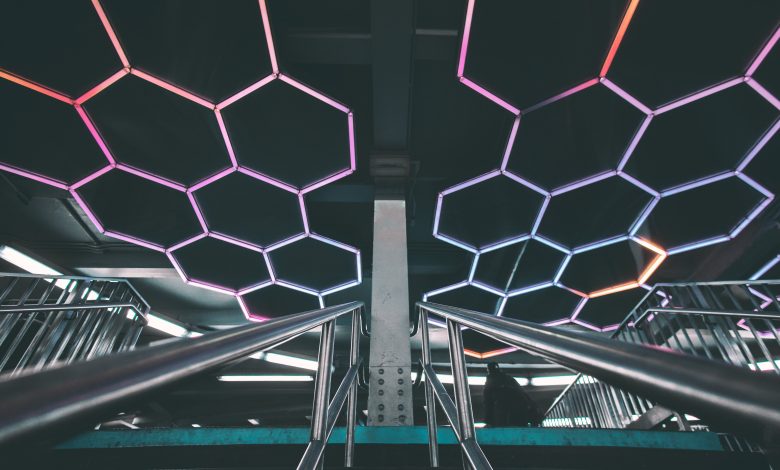
LED lighting has become an integral element of our daily lives, completely changing how we illuminate our homes, businesses and surroundings. This technology has evolved from humble beginnings to become a preferred option for lighting applications in numerous applications. There is much to learn regarding the physics, electronics and materials science that combine in order to give rise to this groundbreaking tech. This article aims to unveil the secrets behind the science of light-emitting diodes.
How LEDs Came About
LED lights first came about in the later part of the 1900s. Scientists found out that when they passed electricity through a certain type of crystal diode, it produced a faint light. The cool thing was that the material didn’t get hot, no matter how long electricity passed through it. This discovery was called electroluminescence. However, it wasn’t until around the 1950s that people really figured out how to use LED lights.
The earliest commercial LEDs were infrared LEDs, often found in laser beams. They were created using a material called gallium arsenide. Later on, scientists discovered materials that could make yellow and red lights. After that, they figured out how to make the lights bigger and brighter.
How LEDs Work
At the core of LED technology is the captivating concept of electroluminescence, where LEDs give off light when an electric current flows through them. LEDs use special materials, like gallium, arsenic, and phosphorus, which have unique properties, allowing them to emit tiny particles of light called photons.
When a voltage is applied to these materials, it pushes electrons into the material, making them move to higher energy levels in the atomic structure.
As these electrons go back to their normal energy levels, they release energy in the form of photons. The difference in energy levels in the material dictates the colour of the light that gets emitted.
By carefully adjusting the makeup of the semiconductor materials, manufacturers can create LEDs that give off light in a range of colours, including bright reds and blues, calming greens, and warm whites.
The Benefits of LED Lighting
LEDs provide an array of benefits that make them an appealing solution in vast applications. Some of the noteworthy advantages include:
Energy Efficiency
High energy efficiency is the most apparent advantage of LED lighting. Light-emitting diodes consume less electricity compared to traditional lighting solutions like fluorescent and incandescent bulbs. This translates to reduced energy bills and lower demand from electricity plants.
Extended Lifespan
LEDs boast an incredibly long lifespan, often lasting up to 25 times longer than traditional bulbs. This prolonged longevity results in fewer replacements, minimizing waste and lessening the environmental effects associated with manufacturing and discarding lighting products.
Eco-Friendly Nature
LED technology is environmentally friendly owing to its lower energy consumption and extended lifespan. LEDs are also free from harmful substances like mercury, commonly present in fluorescent bulbs. This makes LEDs safer for the environment and simpler to dispose of responsibly.
Sturdiness
LED bulbs exhibit greater durability and resistance to shocks, vibrations, and external impacts compared to traditional bulbs. This resilience makes LEDs well-suited for diverse applications, including outdoor and challenging environments.
Instant On/Off
Unlike traditional lighting choices, LEDs offer immediate illumination without any warm-up time. This attribute proves especially beneficial in areas where instant lighting is essential.
Focused Lighting
LEDs release light in a specific direction, concentrating the illumination where it is required. This feature lessens light pollution, reducing the unnecessary light that scatters into the night sky and has negative effects on the environment and wildlife.
The Applications of LED Lighting
The adaptability of LEDs has resulted in their widespread use across various applications. Here are some important areas where LED lighting stands out:
1. Residential Lighting
-LEDs are excellent for general lighting in living rooms, kitchens and bedrooms
-LED strips can be utilized as accent lighting, behind TVs and even under cabinets
-Some bulbs provide adjustable brightness levels and colours, allowing you to transform your house into a personalized haven.
2. Commercial Lighting
-LED bulbs are great for workspaces, offering focused illumination and reduced eye strain.
Commercial LED lighting can be used to improve visibility, boost product displays and spotlight specific items in retail centres.
3. Outdoor Lighting
– LED streetlights offer effective lighting solutions for cities, lowering energy usage and maintenance expenses.
-Garden and landscape lighting enhance the charm of outdoor areas, establishing a cosy and welcoming ambience.
-Solar-powered LED lights provide an environmentally friendly option for lighting pathways and outdoor spaces.
4. Automotive Lighting
LED lights have transformed the automotive industry with their efficiency and long-lasting nature. They are extensively used in headlights, brake lights, taillights, and interior lighting. The adoption of this technology not only enhances visibility but also contributes to the overall safety of vehicles on the road.
Conclusion
In summary, making the switch to LED lighting is a wise and sustainable decision. With their energy efficiency, extended lifespan, and versatility across various settings, LEDs have emerged as the preferred lighting solution for residential, commercial, and outdoor environments.



